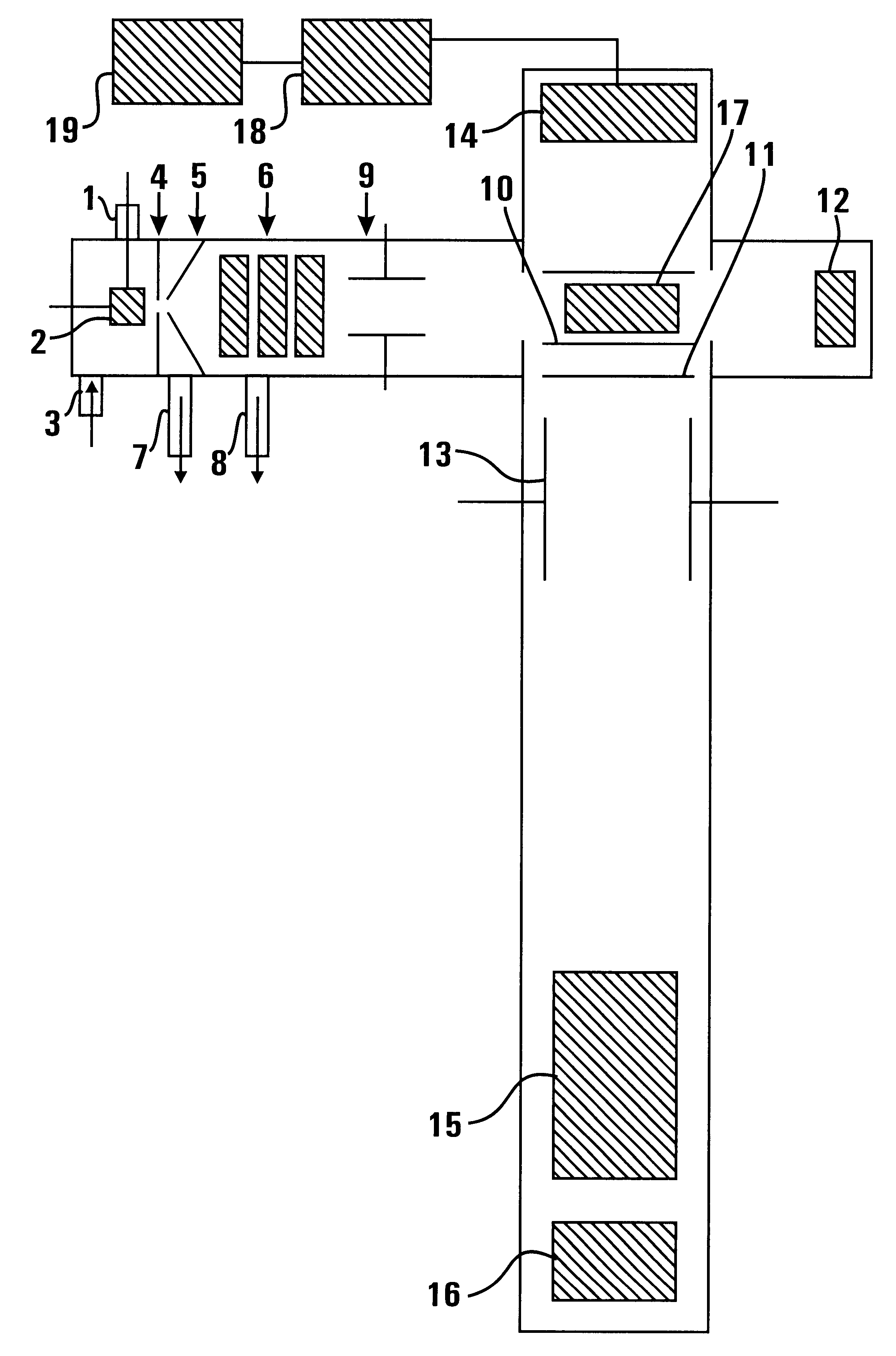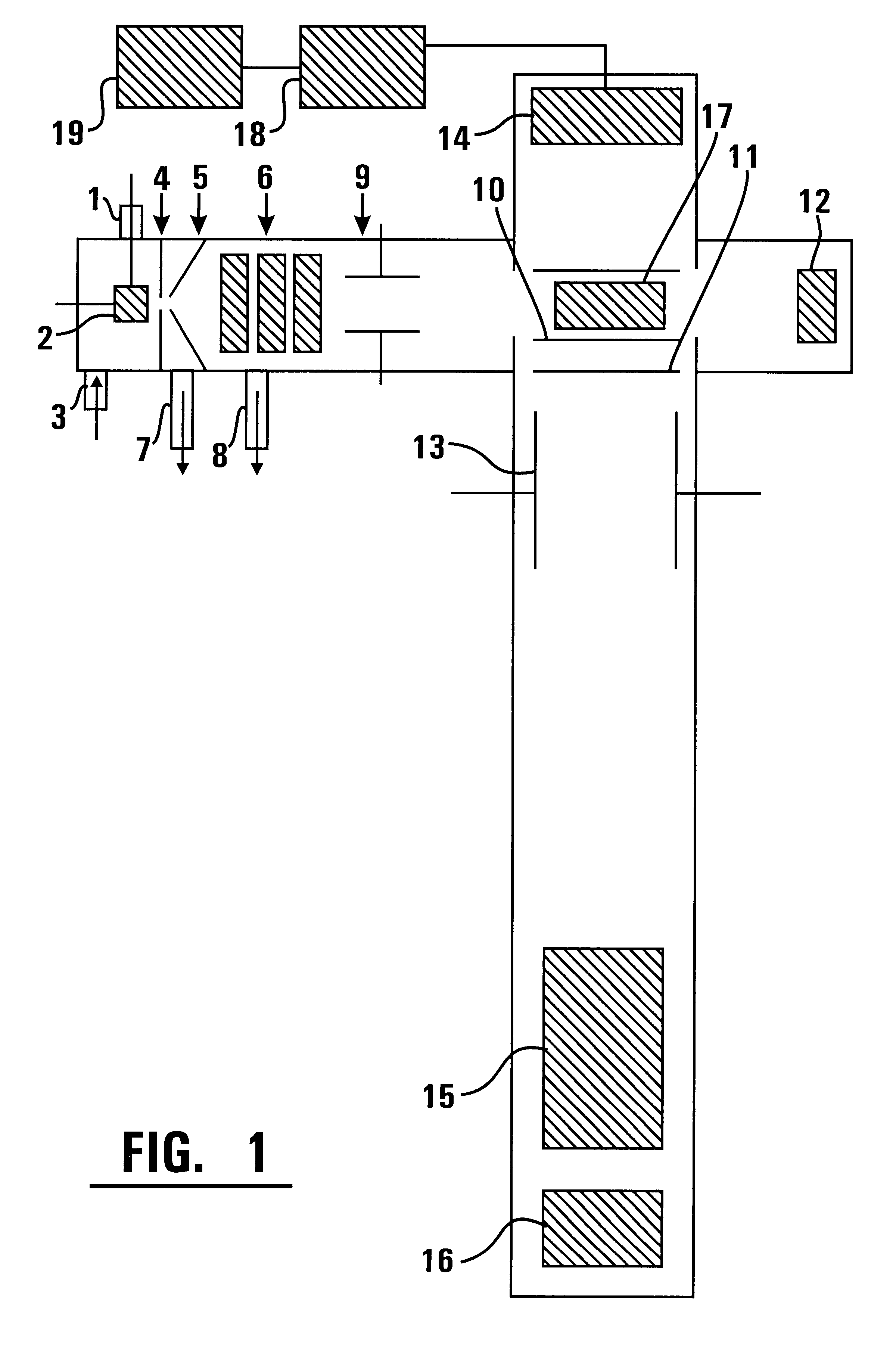Method for detecting elements in solutions and device for realizing the same
a technology for detecting elements and solutions, applied in the direction of mass spectrometers, material testing goods, particle separator tubes, etc., can solve the problems of unable to detect a number of elements in natural water, environmental objects, etc. without preliminary accumulation, and the detection limit is comparatively high
- Summary
- Abstract
- Description
- Claims
- Application Information
AI Technical Summary
Benefits of technology
Problems solved by technology
Method used
Image
Examples
Embodiment Construction
Schematic diagram of the proposed device is shown in FIG. 1.
The device consists of automatic port 1, ionizer 2, inlet for circulation of a buffer gas 3, diaphragm 4, skimmer 5, lens system 6, ducts for differential pumping-out 7 and 8, correcting plates 9, repelling grid (10), accelerating grid 11, Faraday cell 12, correcting plates 13, microchannel plate detectors 14 and 16, reflectron 15, ion focusing region 17, high-speed analog-digital converter 18, and computer 19.
A solution sample is injected into ionizer 2 through automatic port 1. A buffer gas is pumped through port 3. Ions arrive to the mass spectrometer through diaphragm 4, skimmer 5, lens system 6, and correcting plates 9. Differential evacuation is performed through ducts 7 and 8 using backing and turbomolecular pumps. The ions that come into region 17 are injected into the mass spectrometer by a repelling pulse applied to grid 10 and are accelerated by the electric field applied to grid 11. Faraday cell 12 serves for pr...
PUM
| Property | Measurement | Unit |
|---|---|---|
| pressure | aaaaa | aaaaa |
| pressure | aaaaa | aaaaa |
| temperature | aaaaa | aaaaa |
Abstract
Description
Claims
Application Information
 Login to View More
Login to View More - R&D
- Intellectual Property
- Life Sciences
- Materials
- Tech Scout
- Unparalleled Data Quality
- Higher Quality Content
- 60% Fewer Hallucinations
Browse by: Latest US Patents, China's latest patents, Technical Efficacy Thesaurus, Application Domain, Technology Topic, Popular Technical Reports.
© 2025 PatSnap. All rights reserved.Legal|Privacy policy|Modern Slavery Act Transparency Statement|Sitemap|About US| Contact US: help@patsnap.com


